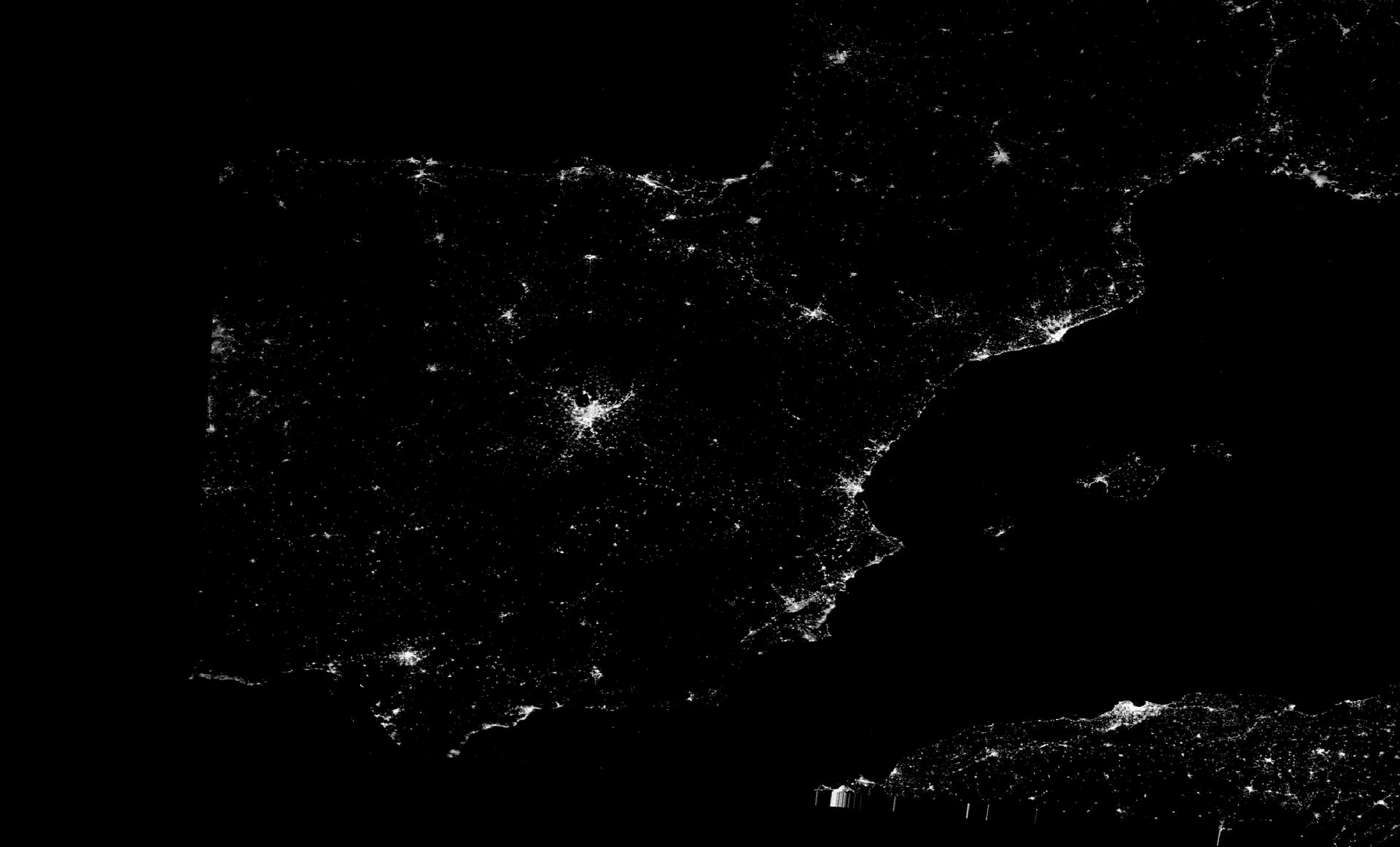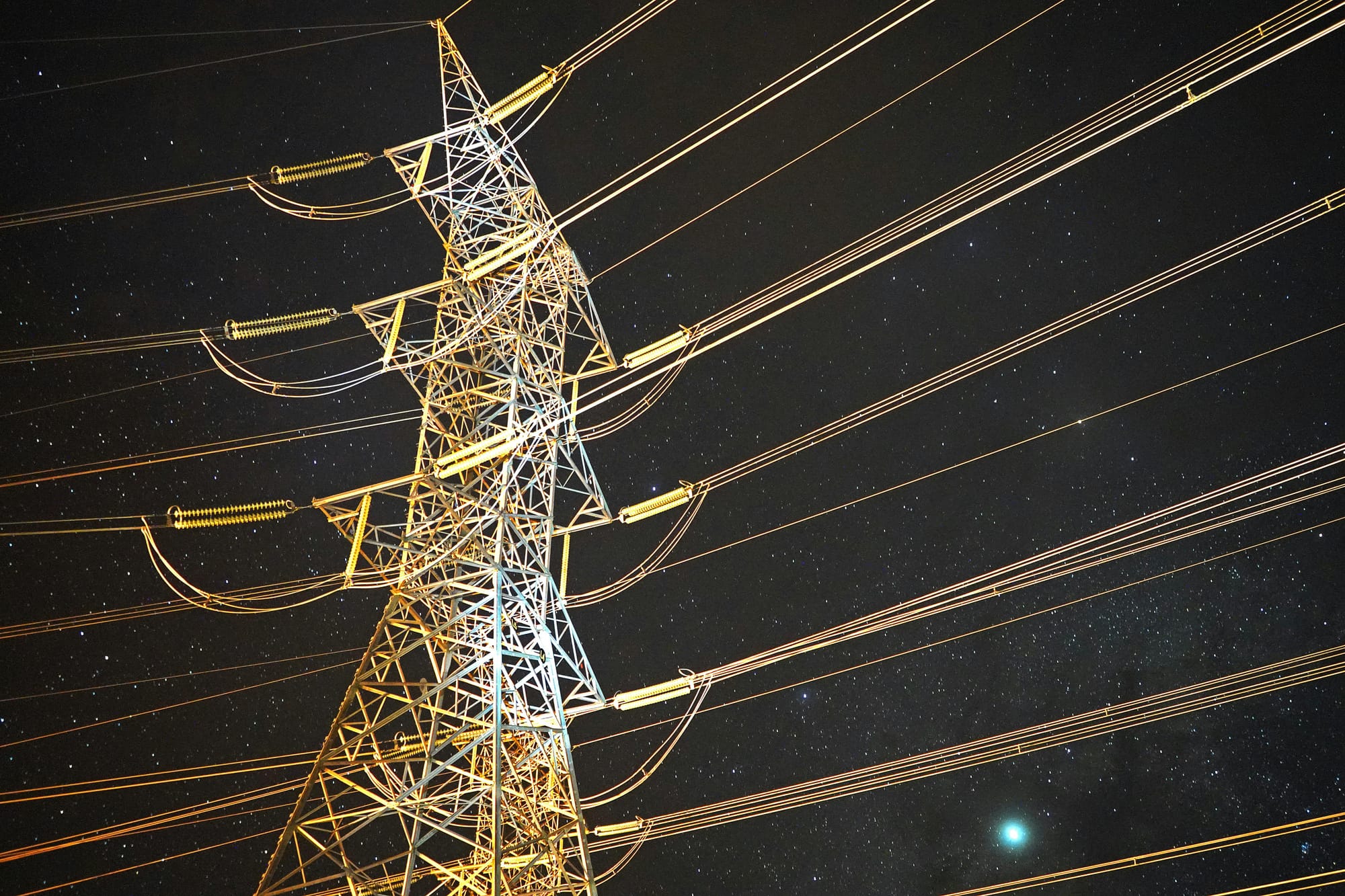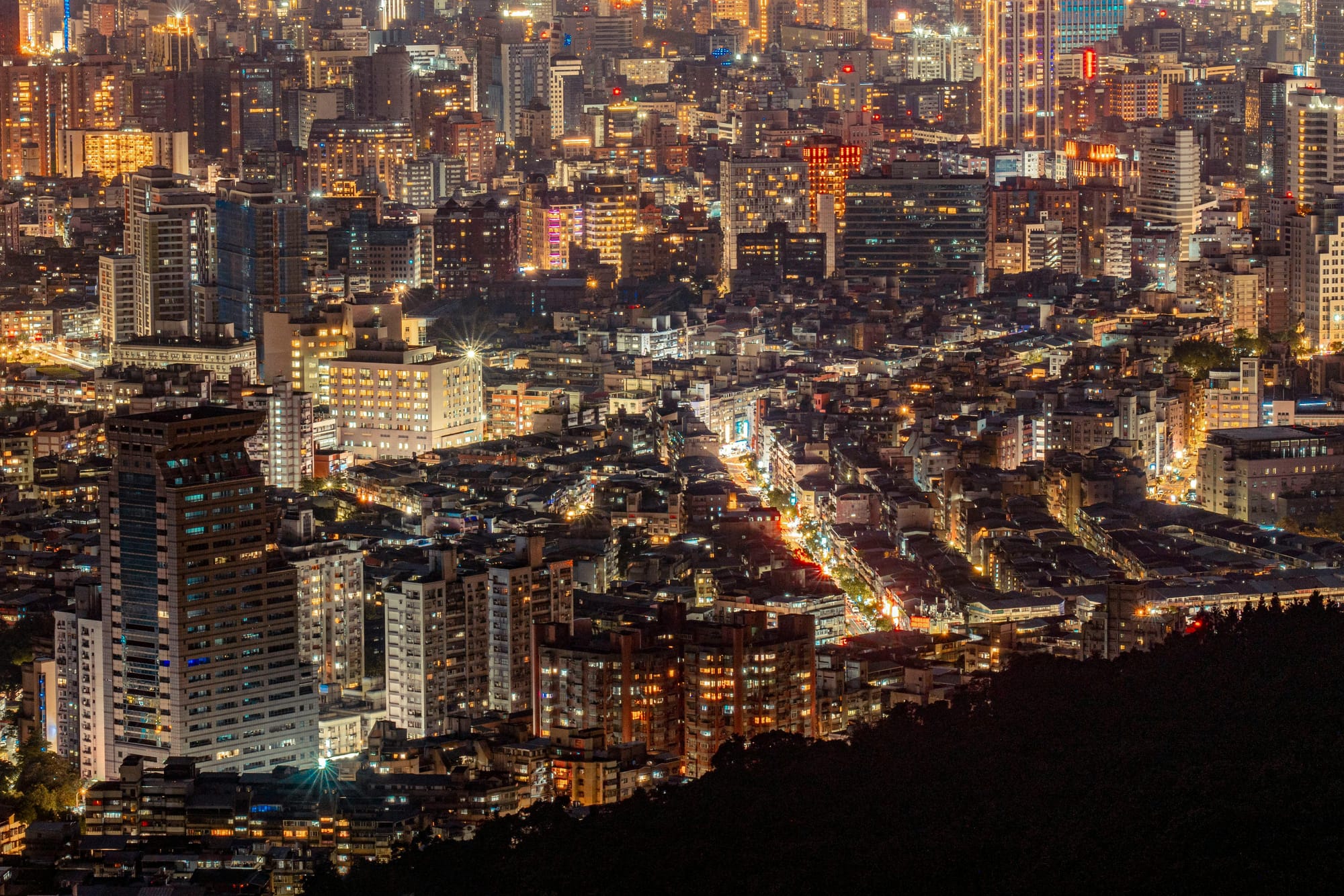Energy Resilience: What every business leader needs to know
Reflecting on lessons from the April 2025 Iberian Peninsula blackout, we explain why energy resilience – once the domain of grid operators/engineers – is now a boardroom issue. And what your organisation can do to avoid becoming collateral damage in any potential future electricity grid failures.

On 28 April 2025, the Iberian Peninsula experienced a widespread and unprecedented blackout, affecting both Spain and Portugal. It wasn’t sabotage, or a cyberattack. It was primarily the result of a cascading technical failure during an otherwise ordinary Spring day. And a red-alert moment for anyone managing buildings, budgets, or business continuity.
In this post, we explain how and why it happened, and what your organisation can do to avoid becoming collateral damage in any potential future electricity grid failures.
We also provide a quick diagnostic to assess your organisation’s readiness for grid instability, blackouts, brownouts, and other energy-related disruptions.
And a simple checklist you can tailor for your own internal communications on how to respond in the event of a power outage – whether that be planned grid maintenance or high-risk weather days – to keep people safe, equipment protected, and business disruption to a minimum.
A. Demystifying energy resilience

Q1: What is energy resilience/security, & why does it matter now more than ever?
Energy resilience refers to the ability of a power system – or your organisation – to withstand, respond to, and recover from energy supply disruptions. It’s not just about avoiding blackouts; it’s about ensuring critical systems can ride through volatility, whether caused by weather events, cyberattacks, or grid instability as we move towards the sustainable energy transition.
With more of our economy electrifying and a growing share of renewables and intermittent generation sources – which don’t naturally provide the same command and control grid stability services as fossil fuels – traditional electricity grids are coming under more strain. Resilience isn’t just a technical challenge. It's a strategic business priority.
Q2: What actually happened during the Iberian Peninsula blackout?
In a nutshell: two interconnection lines between Spain and France failed within seconds. Spain, which had been exporting around 5 GW of electricity, suddenly found itself isolated while overloaded with surplus generation. The grid frequency spiked past 50.2 Hz, triggering the automatic disconnection of around 10 GW of renewables – all simultaneously programmed to shut down above that threshold.
With inertia low (only ~10 GW of synchronous generation online), and with reserves insufficient to respond fast enough, the grid destabilised. Within ~27 seconds, the majority of the system failed.
The power outage, which began around 12:33 CEST, left millions without electricity for several hours. While power was largely restored by the evening, it took nearly a full day for Spain's electricity grid to be declared back to normal. The incident sparked intense debate about its causes, and led to investigations into potential vulnerabilities in the power grid – not just in Spain and Portugal, but in many countries around the world.
Q3: Why is low inertia such a problem in modern grids?
Traditionally, fossil-fuel power stations and hydro plants used heavy rotating machinery, which provided rotational inertia – momentum that resists sudden changes in frequency, like a flywheel smoothing out bumps. This gave the grid time – sometimes seconds – to correct imbalances.
Modern renewables like solar and wind, by contrast, are inverter-based and don’t inherently provide inertia. Without backup from Battery Energy Storage Systems (BESS) or synthetic inertia technologies, frequency can swing wildly and uncontrollably, causing stability issues.
As grids become cleaner, inertia becomes scarcer, and events like the Iberian Peninsula blackout show how milliseconds can matter.
Q4: What is synthetic inertia, & how can BESS help?
Synthetic inertia is the ability of systems like BESS or advanced inverters to mimic the stabilising effect of traditional spinning turbines, but faster.
BESS, or battery energy grid storage (BEGS) systems, can usually respond to frequency deviations in milliseconds, either injecting or absorbing power to cushion shocks. Think of them as the suspension system of the power grid, softening the ride when conditions get bumpy.
Crucially, BESS can provide multiple services:
- Fast frequency response
- Backup power
- Voltage support
- Time-shifting renewable output
A great example of this is the Reid Gardner BESS installation near Moapa in the Nevada desert. Located less than an hour’s drive from the famously energy-intensive Las Vegas Strip, it was constructed on the site of the decommissioned coal-fired Reid Gardner Generating Station.
The new 220 MW / 440 MWh BESS, which utilises 208 lithium iron phosphate battery cells, not only provides grid energy storage to the Nevada electrical grid to help maintain frequency stability during volatile periods, it also integrates excess solar energy into the grid after sunset. During the day, the batteries are charged using plentiful power from nearby solar photovoltaic (solar PV) power stations, and then discharged during the evening peak demand period when more grid energy is needed.
Q5: Could the Iberian Peninsula blackout have been avoided?
According to energy professionals and grid specialists: yes, most likely.
Key measures that could have helped:
- More synthetic inertia via grid-forming inverters or BESS
- Staggered protections on renewables to avoid mass shutdowns at the same threshold
- Better interconnection capacity between Spain and the rest of Europe
- A fast frequency response market (incentivising stabilising actions from flexible assets)
- Updated grid codes requiring all new plants to support grid stability services
Several experts noted that over-reliance on identical protection settings and a lack of diverse responses could have exacerbated the problem.
Q6: What are the business risks of poor energy resilience?
If your operations rely on a continuous power supply – or you’re subject to Scope 2 emissions reporting – then energy resilience is your concern.
Risks include:
- Operational downtime during blackouts or brownouts
- Increased costs from demand spikes, outages, or reactive maintenance
- Reputational damage from service interruptions
- Non-compliance with upcoming energy security or ESG (Environmental, Social, and Governance) regulations
The Iberian Peninsula blackout shows how centralised risk is becoming. As more of our heating, transport, and industrial processes shift to electricity as their only power source, the consequences of grid instability will compound.
Q7: What can organisations do to build energy resilience?
Plenty. And not all of it requires a huge CapEx outlay.
Start with a plan. Understand your critical loads. How long can your systems tolerate an outage? Do you have backup generation or UPS (uninterruptible power supply)? Do your buildings support demand response?
Next steps might include:
- Installing onsite BESS, or solar + storage
- Participating in flexibility markets
- Adding microgrid capabilities
- Upgrading protection settings on your DERs (Distributed Energy Resources)
- Improving energy monitoring and forecasting
Even reducing peak demand and staggering loads can help. It can be as simple as a plan, or as sophisticated as a demand-side response system.
Q8: Isn’t this just a problem for the grid operator? Why should I care?
It’s tempting to think of this as someone else’s problem. But the grid’s growing risks and importance necessitates proactive management of your electrical load, assets, and backup systems.
Like cybersecurity, energy resilience is now a shared responsibility. Organisations, especially large energy users (including data centres), are not just passive consumers – they’re increasingly active participants in keeping the system stable and operating for everybody.
And with the rise of decentralised energy, flexibility services, and ESG scrutiny, there’s growing financial and reputational upside to being ahead of the curve.
Q9: Is BESS the only solution? What about nuclear, hydro, or synchronous condensers?
BESS isn’t the only tool in the toolbox. Other solutions include:
- Synchronous condensers, which provide inertia without generating power
- Grid-forming inverters, embedded in modern wind/solar systems
- Pumped hydro, useful for bulk energy storage but slower to respond
- Nuclear, which provides stable baseload with high inertia (though complex to scale quickly)
Each has trade-offs. The trick is not betting on one silver bullet, but deploying the right mix, in the right place, at the right time, with the right regulation.
Q10: What regulatory changes are on the horizon?
Several countries are already moving to:
- Mandate synthetic inertia and grid-forming capabilities in large new plants
- Incentivise fast frequency response via market reforms
- Standardise DER protection settings to avoid system-wide disconnections
- Fund strategic BESS deployments in key grid locations
For organisations, the trend is clear: expect greater scrutiny of your energy assets’ impact on grid resilience – and greater opportunity to earn revenue by supporting it.

B. Is your energy strategy resilient?
A quick diagnostic to assess your organisation’s readiness for grid instability, blackouts, brownouts, and other energy-related disruptions.
1. Do you know your critical loads?
- Have you identified which operations must stay online during an outage, e.g. SEUs (Significant Energy Users)?
- Do you have visibility over power consumption by site, time, and asset?
- Have you prioritised systems by their resilience requirements?
2. Do you have backup or buffer systems in place?
- Do your sites have access to on-site battery storage (BESS)?
- Are any systems configured for demand-side response or peak shaving?
- Do you have any uninterruptible power supplies (UPS) or generators for critical operations?
3. Can your buildings (or systems) respond to grid stress?
- Are your DERs equipped with frequency response or ride-through capability?
- Are your inverters or controllers capable of grid-forming or synthetic inertia?
- Do your protection settings avoid ‘all at once’ cut-outs?
4. Are you monitoring resilience risks in real-time?
- Do you have real-time or near-real-time monitoring of energy use and supply conditions?
- Can you detect and diagnose voltage dips, frequency events, or local imbalances?
- Are you alerted to blackouts or brownouts across multiple sites?
5. Do you participate in energy flexibility or resilience programmes?
- Are you enrolled in any capacity markets, grid support, or frequency response schemes?
- Do you have a commercial or policy incentive to stay resilient – or help the grid?
- Are you exploring microgrids or hybrid systems for greater independence?
6. Do you have a resilience response plan?
- Is there a documented plan for how your organisation would respond to a grid failure (short, medium, or longer term)?
- Have you tested it in a live scenario or simulation?
- Does your insurance, procurement, or ESG policy factor in grid resilience?

C. Resilience starts with readiness
A simple checklist you can tailor for your own internal communications on how to respond in the event of a power outage – whether that be planned grid maintenance or high-risk weather days – to keep people safe, equipment protected, and business disruption to a minimum.
Preparation phase
- Know what equipment is critical. What systems must stay on?
- Charge laptops and phones. Keep essential devices ready to go.
- Check your local backup. Do you know what backup power is available at your site?
- Save your digital work. Save files frequently – especially before peak hours.
- Know who to contact. Who’s your site’s point of contact during an energy emergency?
During an outage
- Stay calm. Most outages are brief and systems may switch to backup automatically.
- Avoid using lifts. Use stairs until power is confirmed stable.
- Unplug sensitive equipment. Sudden returns of power can cause damage.
- Limit energy use. If backup power is active, conserve it for essential operations.
- Follow instructions. Pay attention to announcements from Facilities or Operations.
After power returns
- Wait for the all-clear. Don’t restart systems or equipment until given the go-ahead.
- Report any issues. Flag anything unusual, like flickering lights, beeping alarms, etc.
- Check your work. Ensure no files or data were lost. Reconnect to systems as needed.
- Take note. If you experienced a challenge, report it – it helps improve the plan for next time.

